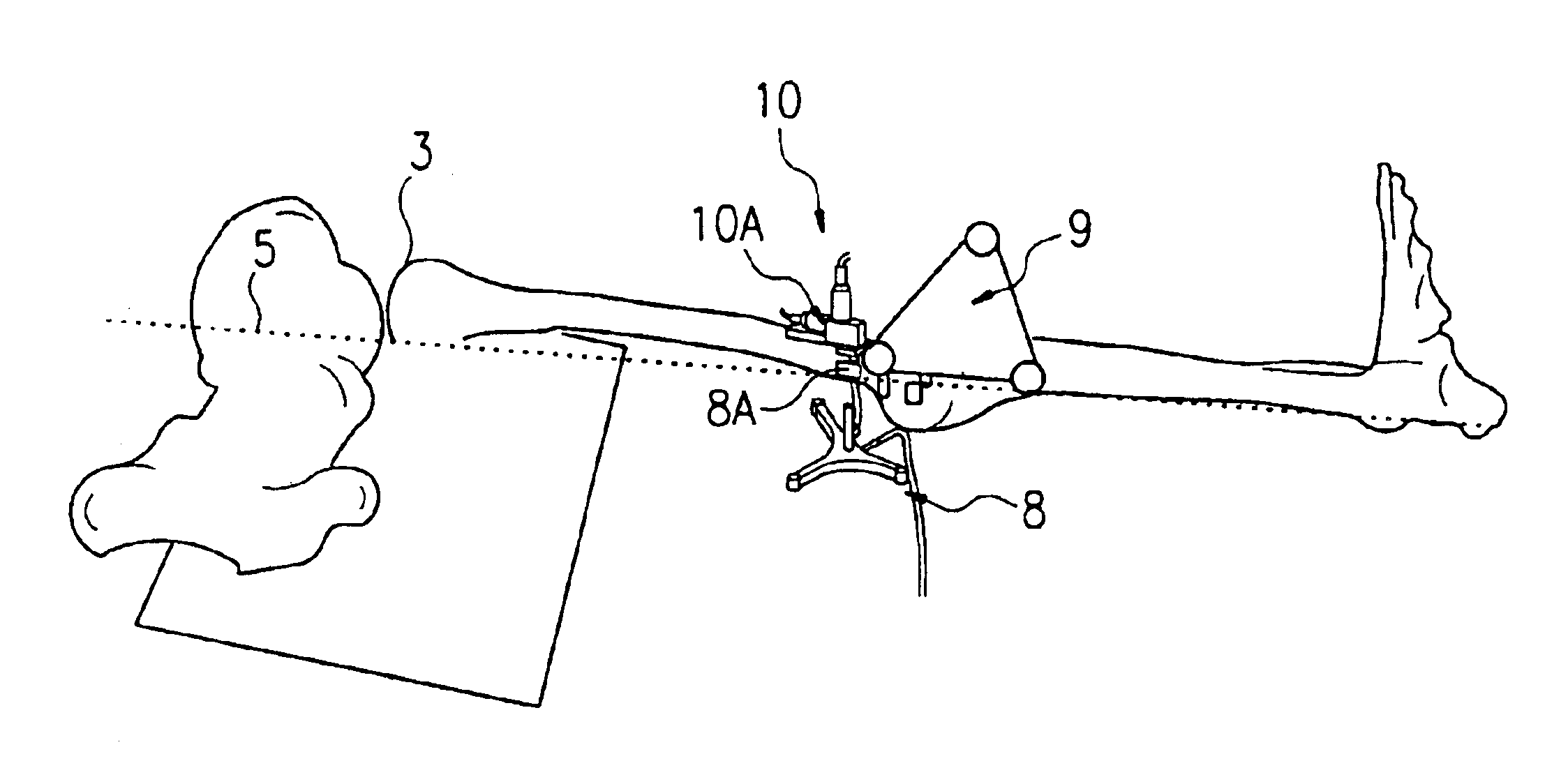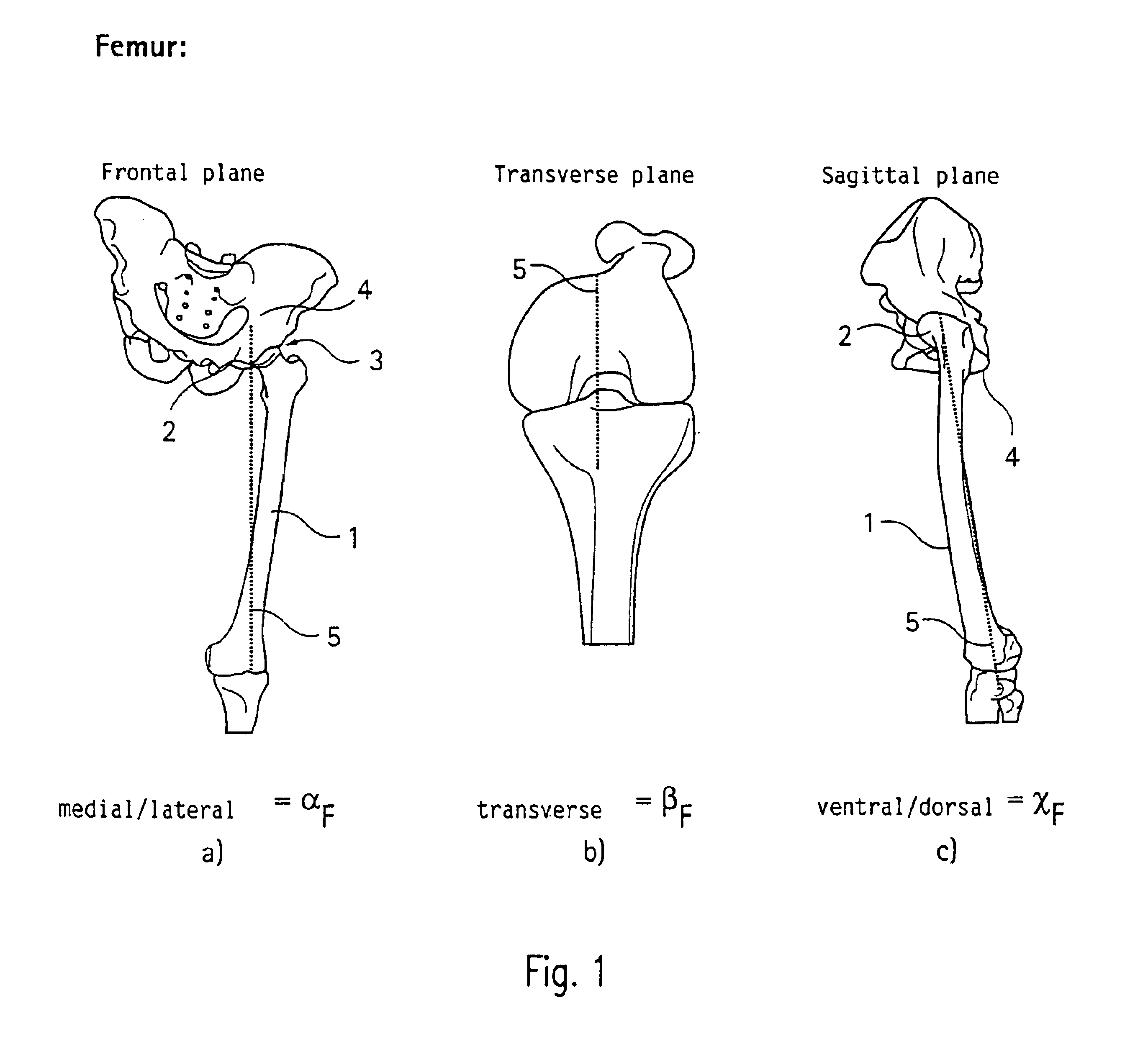Method and apparatus for finding the position of a mechanical axis of a limb
a technology of mechanical axis and limb, which is applied in the direction of position/direction control, diagnostics, sensors, etc., can solve the problems of inability to accurately locate the cutting jig, the performance of this resection is extremely demanding, and the cutting jig is wrongly positioned, so as to reduce the time required for the operation
- Summary
- Abstract
- Description
- Claims
- Application Information
AI Technical Summary
Benefits of technology
Problems solved by technology
Method used
Image
Examples
Embodiment Construction
[0038]FIG. 1 shows how a mechanical axis of the leg of a healthy person is disposed with respect to the femur 1. The mechanical axis 5, drawn with a dashed line, in part (a) is seen from the front, so that its orientation in the medial / lateral direction αF is evident. The mechanical axis 5 is specified by a center of rotation 3 of a femoral head 2 in the socket of a hip joint 4, and by bony reference points in the region of the knee (distal end of the femur).
[0039]In the transverse plane, shown in part (b), the direction βF of the mechanical axis is defined by the piercing point or by the Whiteside line and the direction of the epicondylar axis or dorsal condylar axis.
[0040]In the sagittal plane, shown in part (c), the ventral / dorsal direction χF of the mechanical axis is fixed by the center of rotation 3 of the femoral head 2 and by bony reference points on the femur in the knee region, as in the frontal plane.
[0041]FIG. 2 shows, as another example of a mechanical axis of a limb in...
PUM
 Login to View More
Login to View More Abstract
Description
Claims
Application Information
 Login to View More
Login to View More - R&D
- Intellectual Property
- Life Sciences
- Materials
- Tech Scout
- Unparalleled Data Quality
- Higher Quality Content
- 60% Fewer Hallucinations
Browse by: Latest US Patents, China's latest patents, Technical Efficacy Thesaurus, Application Domain, Technology Topic, Popular Technical Reports.
© 2025 PatSnap. All rights reserved.Legal|Privacy policy|Modern Slavery Act Transparency Statement|Sitemap|About US| Contact US: help@patsnap.com



